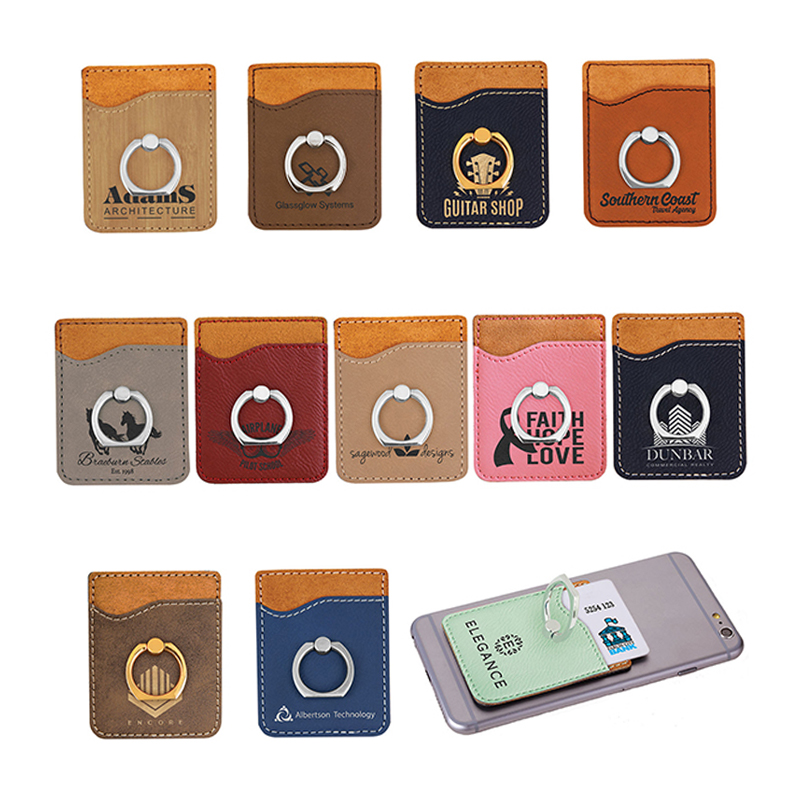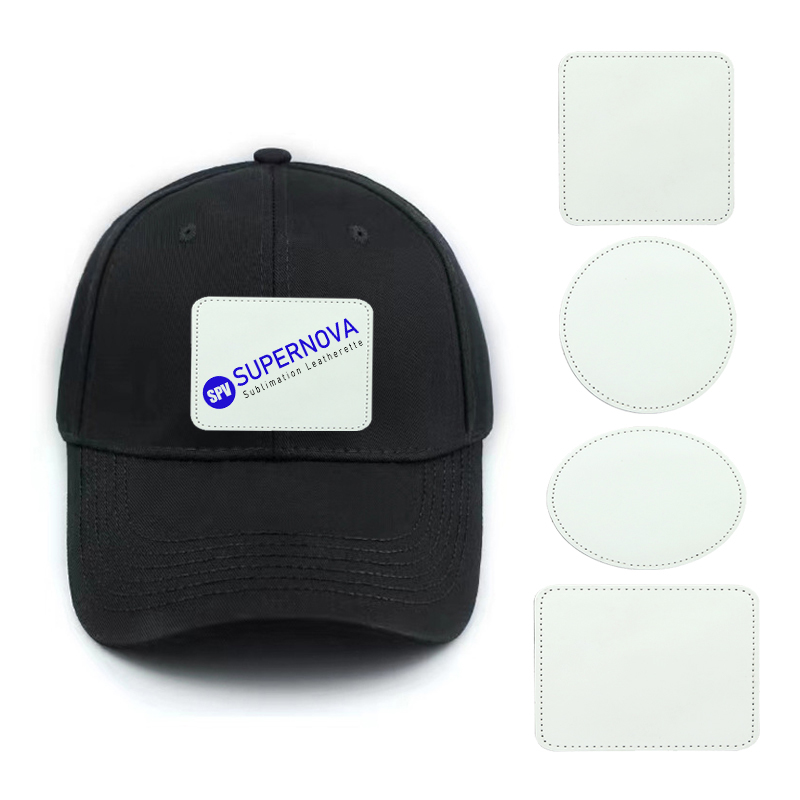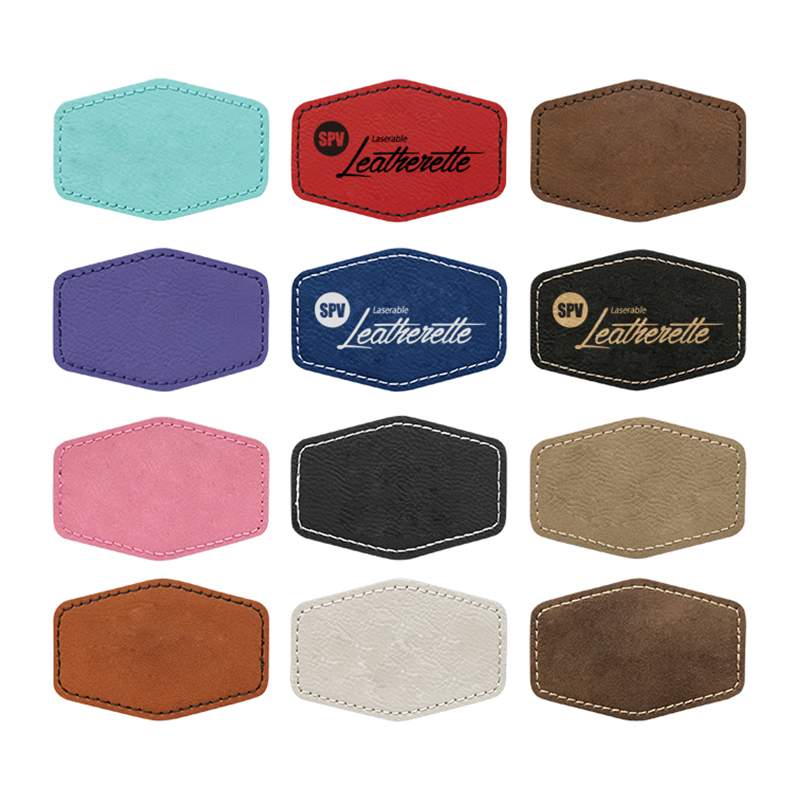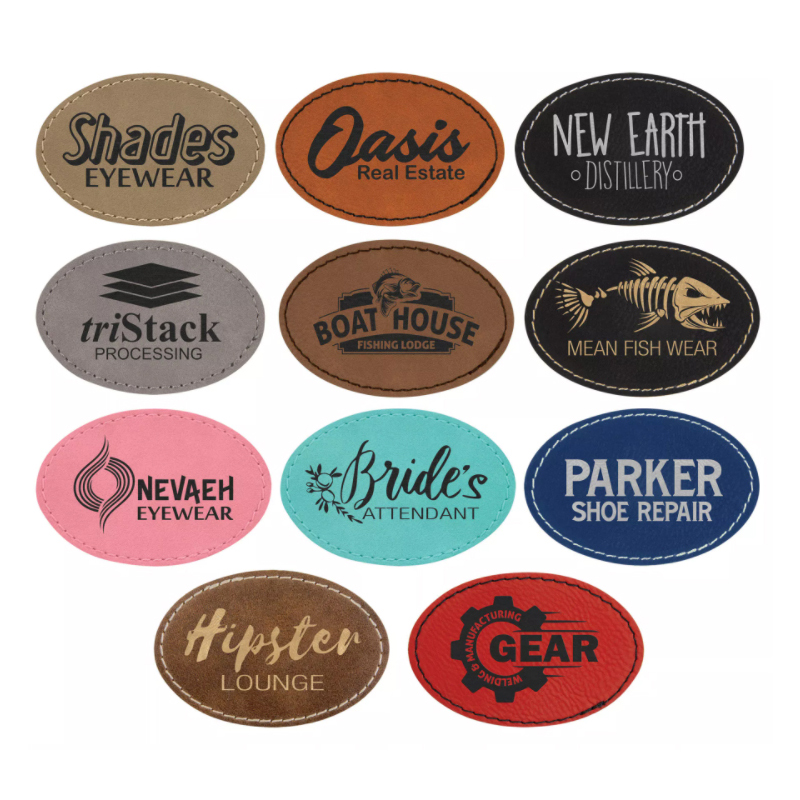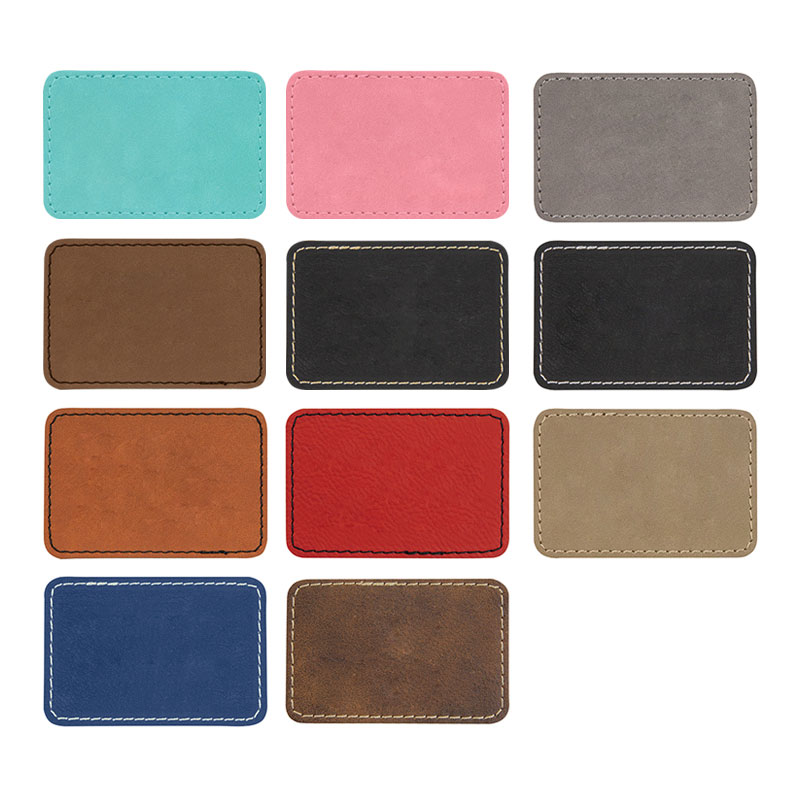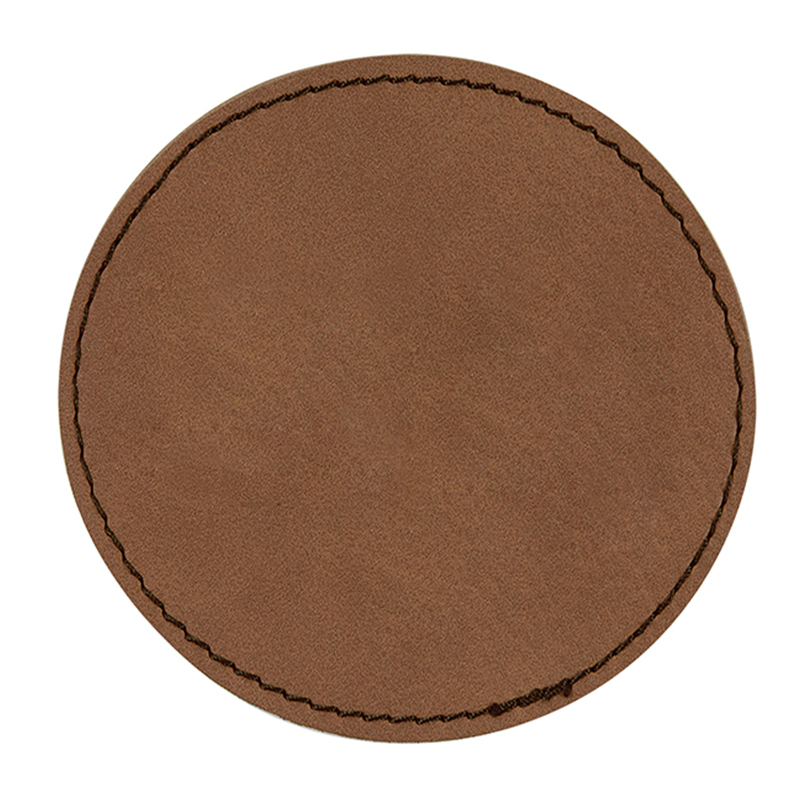Introduction of Leatherette Pet Collars Briefly introduce leatherette pet collars and their growing popularity. Leatherette pet collars have emerged as a dominant force in the pet ...
Read MoreThe Ultimate Guide to Leatherette Pet Collars: Style, Comfort, and Durability
2025-11-12Introduction of Leatherette Pet Collars
Briefly introduce leatherette pet collars and their growing popularity.
Leatherette pet collars have emerged as a dominant force in the pet accessory market, offering a compelling alternative to traditional materials. These collars, often referred to as faux leather collars or vegan leather collars, are synthetic substitutes designed to mimic the texture, aesthetic appeal, and strength of genuine leather without the associated cost, maintenance demands, or ethical concerns. Their growing popularity is fueled by several key consumer trends: a heightened focus on animal welfare (making vegan leather collars attractive), the demand for water resistant pet collars that can withstand active outdoor use, and the desire for high-fashion, stylish pet collars available at accessible price points. As more pet owners seek durable yet affordable accessories for their furry friends, the market for leatherette pet collars continues to expand rapidly across accessories for both dog collars and cat collars.
Highlight the benefits of leatherette as a material for pet collars.
The primary benefits of utilizing leatherette stem from its highly engineered composition. Unlike natural leather, which requires specialized treatment to resist moisture and prevent cracking, leatherette is inherently water resistant pet collars, making it ideal for pets who frequently play outdoors, swim, or simply get caught in the rain. This characteristic also contributes to hygiene, as the material is non-porous and incredibly easy to clean—a quick wipe often suffices. Furthermore, modern manufacturing techniques allow leatherette to be produced in a stunning array of colors, textures, and finishes, supporting the demand for stylish pet collars and personalized pet collars with vibrant designs. Ultimately, the combination of low cost, high durability, and versatility makes leatherette a practical and attractive choice for everyday wear.
What is Leatherette?
Define leatherette and explain its composition (PU or PVC).
Leatherette, widely known as faux leather collars or often as vegan leather collars, is a synthetic material meticulously engineered to look and feel like real leather. It is fundamentally different in composition, consisting of a polymer coating applied to a fabric base, which is usually cotton, polyester, or rayon. The primary difference among types of leatherette lies in the chemical composition of the coating: Polyurethane (PU) and Polyvinyl Chloride (PVC). PU leather collars are generally softer, more flexible, and allow for better breathability than PVC, making them a popular choice for accessories that need to move naturally, like high-quality dog collars and cat collars. PVC leather collars, conversely, are extremely robust, highly water resistant pet collars, and often thicker, making them incredibly durable pet collars suitable for heavy-duty applications or environments requiring constant sanitation.
Compare leatherette to genuine leather: pros and cons.
The choice between leatherette pet collars and genuine leather involves a trade-off between natural feel and engineered performance. Genuine leather is celebrated for its breathability, luxurious patina that develops over time, and classic scent. However, it is susceptible to water damage, requires extensive conditioning to prevent cracking, and is significantly more expensive. Leatherette, in contrast, offers consistent quality with no natural flaws. Its non-porous surface makes it perfectly water resistant pet collars and stain-proof, simplifying cleaning immensely—a major advantage for highly active pets. While some might argue that faux leather collars lack the natural "give" of real leather, modern technology has made high-quality PU versions exceptionally soft and pliable, ensuring optimal comfort for pets. The lower production cost also translates directly to more affordable, stylish pet collars options for consumers.
Discuss the environmental and ethical considerations of using leatherette.
The adoption of vegan leather collars is largely driven by ethical considerations, offering pet owners a completely animal-product-free choice. This is the most compelling argument for many consumers. From an environmental perspective, the comparison is complex. While using PU leather collars or PVC leather collars avoids the environmental impact associated with animal husbandry and leather tanning (which often involves harsh chemicals), leatherette itself is derived from petrochemicals. Historically, PVC leather collars have raised environmental concerns due to the use of phthalates and the difficulty of disposal. However, the industry is increasingly shifting towards more sustainable vegan leather collars solutions, including bio-based polyurethanes, recycled materials, and innovative plant-based polymers, positioning leatherette pet collars as a more environmentally conscious choice in the long run, particularly when durability allows for fewer replacements.
Benefits of Leatherette Pet Collars
Leatherette pet collars have earned their status as a premium choice in the pet accessories market by striking an optimal balance between performance, aesthetics, and price. These modern faux leather collars are specifically engineered to meet the contemporary pet owner's demand for durable pet collars, ease of maintenance, and ethical sourcing.
Durability and resistance to wear and tear
Modern vegan leather collars, especially those constructed from high-quality PU leather collars and PVC leather collars, are renowned for their exceptional durability. Due to their synthetic, uniform structure, these materials exhibit superior resistance to tearing, splitting, and abrasion compared to natural hides. This makes them ideal durable pet collars for highly active pets, whether they are rugged outdoor dog collars or indoor-safe cat collars. Unlike genuine leather, which can become brittle and crack under stress or temperature fluctuations, leatherette maintains its structural integrity and aesthetic appeal over a long service life, significantly outlasting many natural material alternatives.
Water resistance and ease of cleaning
The inherent non-porous nature of the polymer coating is a crowning benefit of leatherette pet collars. They function as truly water resistant pet collars, remaining impervious to rain, puddles, and accidental spills, which prevents the collar from becoming stiff, warped, or harboring mildew and odors. This non-absorbent surface drastically simplifies maintenance; cleaning off mud, dirt, or spills requires only a quick wipe with a damp cloth or a mild soap solution. This hygiene factor is a major advantage for all dog collars, particularly those used by working or outdoor breeds, ensuring the accessory remains clean and comfortable for the pet.
Comfort for pets (softness and flexibility)
Contrary to the stiff reputation of earlier synthetic products, high-grade faux leather collars are now manufactured to be exceptionally soft and flexible. Utilizing advanced polymer technology, the material conforms seamlessly to the contours of a pet's neck. This pliability ensures that the cat collars and dog collars provide a comfortable, lightweight fit, minimizing the risk of chafing or irritation, even when worn for extended periods. The softness ensures that the collar is not only a functional accessory but also one that promotes the pet's well-being and freedom of movement.
Stylish appearance and variety of designs
Leatherette pet collars offer pet owners unparalleled flexibility in design, making them the ultimate stylish pet collars. The material is easily dyed, embossed, and printed, allowing manufacturers to offer an immense selection of vibrant colors, metallic finishes, and realistic textures that mimic exotic leathers. This versatility supports the trend for accessories that reflect current fashion. Moreover, the robust surface of the material makes it an excellent base for high-quality personalized pet collars and the integration of features like safety-focused reflective pet collars without compromising the overall design integrity.
Affordability compared to genuine leather collars
The final compelling advantage is cost. Because the production process for vegan leather collars is industrialized, efficient, and does not depend on the supply chain of animal agriculture, the final product is significantly more affordable. This cost-effectiveness allows pet owners to purchase high-quality, durable pet collars at a competitive price, making premium looks and high performance accessible to a broader consumer base.
Key Benefits Comparison Table
|
Feature |
Leatherette Pet Collars |
Genuine Leather Collars |
|---|---|---|
|
Durability |
High: Superior resistance to cracking, tearing, and abrasion. Highly durable pet collars. |
Moderate: Requires conditioning; susceptible to drying and cracking. |
|
Water Resistance |
Excellent: Inherently water resistant pet collars; wipe-clean maintenance. |
Poor: Absorbs water, leading to stiffness, staining, and odor development. |
|
Style Variety |
Extensive: Unlimited colors, metallic finishes, and textures (stylish pet collars). |
Limited: Restricted by natural hide size, color, and texture. |
|
Affordability |
High: Lower production cost translates to better consumer value. |
Low: High material and specialized processing cost. |
|
Ethical Sourcing |
Excellent: Vegan leather collars (completely animal-product free). |
Variable: Depends on sourcing standards and tanning processes. |
Types of Leatherette Pet Collars
The versatility of the leatherette material, combined with innovative pet accessory design, has resulted in a wide array of specialized leatherette pet collars. These different dog collars and cat collars are engineered to meet specific needs, ranging from everyday wear to training and enhanced safety.
Standard flat collars
These are the most common and conventional type of leatherette pet collars. They typically consist of a single, continuous strip of faux leather collars material featuring an adjustable series of holes, a traditional buckle (or sometimes a quick-release clasp), and a solid metal D-ring for leash and tag attachment. Their strength lies in their simplicity, reliability, and everyday practicality, making them staple dog collars and cat collars for the majority of pets. Modern manufacturing techniques allow standard flat collars to be produced as highly stylish pet collars, available in an endless palette of colors and textures, often realistically mimicking fine grain or patented finishes. When constructed from high-quality PU leatherette, they function as highly durable pet collars suitable for all-day wear across various conditions, without the common maintenance issues associated with real leather.
Martingale collars (limited slip)
Martingale collars, also known as limited-slip or greyhound collars, are specially designed to prevent a pet from slipping out of its collar when pulling or frightened. The collar is constructed with two distinct loops: a larger loop that fits loosely around the pet's neck, and a smaller control loop where the leash is attached. When the pet pulls, the smaller loop tightens, restricting the size of the larger loop just enough to prevent the collar from slipping over the pet’s head, but crucially, it stops before reaching a choking point. Leatherette pet collars in the martingale style are popular dog collars for breeds with narrow heads, such as Whippets and Greyhounds, or for use in training. The smooth, low-friction surface of the vegan leather collars ensures comfort while the structural integrity provides the necessary control and prevents dangerous escapes.
Personalized/Engraved collars
The trend toward functional and unique identification has driven significant demand for personalized pet collars. These specialized leatherette pet collars are customized directly with the pet's essential information, such as their name, the owner's phone number, or critical medical alerts. This information is typically applied using laser engraving directly onto the faux leather collars material or by securely attaching custom engraved metal ID plates. This method eliminates the risk of lost, dangling ID tags, making the identification a permanent and highly visible part of the durable pet collars. Leatherette is an excellent medium for engraving because its smooth, non-porous surface provides consistent contrast, ensuring the details are clear, long-lasting, and contribute to the overall aesthetic of the stylish pet collars.
Reflective collars for safety
Safety is a paramount concern for pet owners, especially those who walk their pets during low-light conditions (dawn, dusk, or night). Reflective pet collars are designed with this in mind, incorporating specialized high-visibility strips, piping, or interwoven reflective threads directly into the vegan leather collars material. These elements effectively reflect light back to its source, dramatically increasing the pet's visibility to approaching vehicles, cyclists, and pedestrians. While the core is the inherently robust leatherette pet collars material, the addition of the reflective element makes these a necessary safety accessory. They are essential dog collars for active, outdoor pets, providing a crucial layer of passive safety without compromising on the aesthetics of a stylish pet collars design.
Collars with different buckle types
The overall functionality and safety profile of leatherette pet collars are heavily influenced by the type and quality of the hardware used. The choice of buckle is particularly critical:
Traditional Buckle: This is the most secure option, utilizing a standard belt-like prong and hole mechanism. It is overwhelmingly preferred for strong, large dog collars and working animals where maximum holding power and security are required. This ensures the highly durable pet collars remain securely fastened under extreme pulling force or unexpected stress.
Quick-Release Buckle: These lightweight plastic or metal snap closures offer exceptional convenience, allowing the owner to rapidly attach or detach the collar with a simple squeeze. They are very popular for small cat collars and dog collars where ease of use is prioritized. For cats, a specific type of quick-release, known as a break-away clasp, is often used; this clasp is designed to open under minimal tension to prevent choking hazards should the collar become snagged on a branch or fence. Choosing the right buckle type is essential for balancing the pet's safety, activity level, and the owner's need for convenience.
How to Choose the Right Leatherette Pet Collar?
Selecting the ideal leatherette pet collars is a pivotal decision that directly impacts the comfort, safety, and daily life of a pet. The selection process must go beyond aesthetics and choosing a simple stylish pet collars design; it demands a thorough consideration of fit, material composition, and component integrity to ensure the accessory serves as truly durable pet collars that last.
Measuring your pet's neck size for the perfect fit
Achieving a correct fit is the single most critical factor for both the well-being and security of the pet. A poorly sized leatherette pet collars—either too tight or too loose—can lead to severe issues, from chafing and respiratory restriction to dangerous escapes. To measure precisely, pet owners should use a flexible cloth tape measure positioned high on the pet’s neck, where the collar is naturally intended to rest.
The Two-Finger Rule: This standard industry guideline is essential: once the dog collars or cat collars is fastened, the owner should be able to comfortably slide two fingers between the collar material and the pet's neck. This provides the optimal gap, ensuring the collar is secure enough to prevent slipping over the head during a pull, yet loose enough to guarantee day-long comfort. When dealing with thick-coated breeds, owners must ensure they measure against the skin, not just the fur.
Sizing Range: When purchasing faux leather collars, it is always advisable to select a size where the pet's actual neck measurement falls within the middle third of the collar’s adjustable range. This critical allowance ensures that the durable pet collars can be adjusted inward or outward to accommodate seasonal coat changes, weight fluctuations, or for adjusting specialized personalized pet collars for better tag placement, ensuring functionality throughout the pet's life.
Considering your pet's breed, size, and activity level
A pet’s physical and behavioral profile should dictate the functional requirements of their vegan leather collars. The design must match the force and energy level of the animal.
Breed and Size: Large, muscular dog breeds (such as Great Danes or Saint Bernards) require dog collars that are robust, wide, and thick—often utilizing heavy-duty PVC leather collars material. This width (typically 1.5 to 2 inches) is necessary to distribute the immense pressure generated during a powerful pull evenly across the pet’s neck, preventing injury. Conversely, smaller breeds, puppies, and cat collars must utilize narrower, lightweight options—often made from flexible PU leather collars—to avoid being bulky or restricting movement.
Activity Level: For highly energetic dogs that love the outdoors, water, and mud, the inherent water resistant pet collars quality of leatherette is a key advantage. Active dogs need collars that are easy to clean and resist mildew and odor. Furthermore, pets that are often walked near roadways or during low-light hours should be fitted with reflective pet collars designs integrated into the faux leather collars material to dramatically enhance visibility and safety, providing a critical passive safety feature.
Selecting the appropriate width and thickness of the collar
The physical dimensions of the leatherette pet collars are directly tied to its strength, comfort, and efficacy, particularly in high-tension scenarios.
Width: The width of the collar determines how force is distributed. A collar that is too thin relative to the pet’s size and strength will function like a cheese wire when the pet pulls, potentially digging into the neck and causing discomfort or harm. General guidance suggests using wider collars for training, power breeds, and as the ultimate durable pet collars for working dogs, while thinner widths are acceptable for house-bound cat collars or small-breed dog collars that exhibit minimal leash pulling.
Thickness: The thickness of the vegan leather collars material affects both the durability of the accessory and the flexibility around the pet's neck. While thicker PVC leather collars are generally more durable pet collars for heavy-duty use and resist tearing, they must retain sufficient pliability. High-quality PU leather collars often achieve a soft hand-feel despite being thick, ensuring that the necessary strength is balanced with neck comfort. Always ensure the thickness doesn't interfere with the smooth articulation of the buckle hardware.
Choosing hardware (buckles, D-rings) that are durable and secure
The hardware—the buckle, D-ring, and adjusters—is the primary point of stress and potential failure on any collar. Quality cannot be compromised here, especially for durable pet collars.
D-Rings: The D-ring, where the leash attaches, must be made of solid, non-rusting metal, such as welded stainless steel or heavy-gauge brass. Plated metals may chip and expose corrosive base metal, compromising the collar’s water resistant pet collars status. The D-ring must be secured to the leatherette pet collars through robust double or triple-stitching or high-quality riveting to withstand sudden jerks from strong dogs.
Buckles: The decision between a traditional belt-style buckle and a quick-release clasp is a matter of safety and function. Traditional buckles provide the most secure fastening and are mandatory for strong, large dog collars. Quick-release buckles are highly convenient but must be chosen in heavy-duty plastic or metal, and for cat collars, they must be the 'breakaway' safety type designed to release under minimal tension to prevent snagging and strangulation risks. The integrity of the buckle is critical to the longevity of the entire collar system.
Checking for quality stitching and construction
The longevity of faux leather collars is often not determined by the polymer material itself, but by the quality of the fabrication. Inferior stitching is the most common weakness in low-cost products.
Stitching: High-quality leatherette pet collars utilize heavy-duty, UV-resistant thread (typically bonded nylon or polyester). The stitching must be perfectly straight, dense, and uniform. Critically, areas surrounding the D-ring, buckle prongs, and adjusters should feature reinforced stitching (back-tacking or box stitching) to handle the highest levels of pulling stress. This attention to detail defines the quality of truly durable pet collars and ensures the accessory doesn't fray or fall apart prematurely.
Riveting and Finishing: When rivets are used to secure hardware or attachment plates (common on personalized pet collars), they should be smoothly finished, rust-resistant, and flush against the surface. Sharp edges or protruding hardware can chafe the pet’s skin, indicating poor manufacturing quality. The overall construction must demonstrate precision, ensuring the stylish pet collars maintains its structural shape over many years of use.
Care and Maintenance of Leatherette Pet Collars
The primary appeal of leatherette pet collars lies not only in their stylish pet collars design but also in their minimal maintenance requirements compared to genuine leather. By implementing a simple, routine care regimen, pet owners can ensure their faux leather collars remain hygienic, functional, and serve as genuinely durable pet collars for years to come.
Cleaning instructions: how to clean leatherette without damaging it
Due to their synthetic, non-porous surface (whether PU leather collars or PVC leather collars), leatherette pet collars possess an innate water resistant pet collars quality that makes cleaning exceptionally simple and fast. This routine hygiene is crucial for both dog collars and cat collars to prevent the buildup of dirt, oil, and environmental debris which can eventually degrade the material or harbor bacteria.
Routine Cleaning: For everyday maintenance, simply use a soft cloth or sponge dampened with warm water. A thorough wipe-down will easily remove surface dirt, dust, and light oil. Unlike natural leather, this process does not require specialized conditioning.
Deep Cleaning for Stains: For tougher stains, such as dried mud or accidental pet messes, a mild, non-abrasive soap or gentle dish detergent mixed with water is highly effective. Apply the solution to the collar, gently scrub the surface (avoiding the hardware initially), and then immediately rinse the collar by wiping it down with a clean, water-dampened cloth. The key is to avoid harsh chemicals or solvents (like bleach or ammonia), which can break down the polymer coating of the vegan leather collars and cause discoloration or cracking.
Drying: Although these are water resistant pet collars, it is best practice to always dry the collar immediately after cleaning using a clean, soft towel. Avoid hanging the collar in direct sunlight or using excessive heat sources (like blow dryers), as prolonged UV exposure or high heat can eventually cause the leatherette to stiffen, fade, or become brittle over time.
Proper storage to prevent cracking or damage
While leatherette pet collars are highly resilient, improper storage can significantly shorten their lifespan, especially for seasonal accessories or back-up personalized pet collars. Correct storage focuses on protecting the material from its primary enemies: extreme temperature and physical compression.
Avoid Extreme Conditions: Never store faux leather collars in areas exposed to prolonged direct sunlight (like a windowsill) or in places with extreme heat, such as inside a vehicle during summer months. High heat can accelerate the chemical degradation of the polymer, leading to hardening and cracking. Similarly, storing the collar in freezing temperatures is also detrimental. A cool, dark closet or drawer is ideal.
Prevent Creasing and Compression: Store the durable pet collars in a relaxed, coiled shape rather than sharply folded or crammed into tight spaces. Physical creasing can stress the synthetic fibers and lead to permanent lines or cracks in the coating. If storing multiple dog collars or cat collars, ensure they are not crushed by heavy objects, which could compromise the integrity of the material and its embedded features (like reflective strips in reflective pet collars).
How to maintain the hardware (buckles, rings) to prevent rust?
The longevity of a leatherette pet collars is often limited by the quality and care of its metal components. Buckles, D-rings, and adjustment slides—even if made from stainless steel or brass—can corrode or seize if neglected.
Post-Exposure Rinse: If the collar has been exposed to salt water (e.g., a beach trip) or harsh chemicals, immediately rinse the metal hardware with plain, clean water. Salt is a primary accelerator of rust and corrosion.
Drying and Lubrication: After rinsing or cleaning, ensure all metal parts are thoroughly dried. For traditional belt-style buckles, a very light application of silicone lubricant or petroleum jelly to the moving pin and buckle holes can ensure smooth operation and prevent rust accumulation that could seize the mechanism. This attention to the hardware ensures that the durable pet collars remains functional and safe.
Leatherette Pet Collars: Safety Considerations
While leatherette pet collars are highly valued for being both durable pet collars and supremely water resistant pet collars, their fundamental purpose—the safe and secure containment of the pet—must always be prioritized. A beautiful stylish pet collars or a customized personalized pet collars must never compromise the pet's well-being. Owners must maintain extreme vigilance regarding the three cornerstones of collar safety: fit, integrity, and visibility, ensuring the collar functions correctly at all times.
Ensuring the collar fits properly to prevent escapes or choking hazards
The importance of precise, correct fit for any leatherette pet collars cannot be overstated. An ill-fitting collar—whether too loose or too tight—poses significant, immediate risks. If a collar is excessively loose, the pet, particularly agile breeds known for "backing out," can easily escape from their dog collars or cat collars, leading to dangerous scenarios like getting lost or encountering traffic hazards. Conversely, a collar that is too restrictive can cause friction burns, localized alopecia, and, critically, impair the pet's ability to breathe or swallow, especially when pulling on the leash.
The Two-Finger Rule & Tension Check: Pet owners must adhere strictly to the industry standard "Two-Finger Rule" immediately after fastening the collar. Furthermore, for the robust faux leather collars used on strong dogs, owners should observe the pet's reaction when the leash is briefly pulled; the collar should apply pressure evenly and remain positioned correctly without shifting up toward the ears or down onto the chest.
Specialized Safety for Cats: For cat collars, the use of specialized quick-release or breakaway clasps is a non-negotiable safety feature. These clasps are engineered to snap open under a minimal amount of force (usually 5 to 11 lbs of tension), preventing accidental strangulation should the vegan leather collars become snagged on a branch, fence post, or household fixture during play or climbing. This critical design choice in cat collars overrides the need for maximum durability in an emergency scenario.
Regularly inspecting the collar for wear and tear
Even the most robust durable pet collars made from engineered materials like PU leather collars or heavy-duty PVC leather collars will eventually succumb to stress, weather, and friction. Regular, meticulous inspection is a mandatory step in responsible pet ownership to prevent sudden component failure during critical moments, such as walking near traffic. The inspection should cover the entire accessory, focusing on three key areas:
Hardware and Fastening Points: This is the most common point of failure. Examine the metal D-ring and buckle for any signs of distortion, bending, or stress fractures. Corroded or weakened hardware on water resistant pet collars can snap unexpectedly. For dog collars utilizing traditional buckles, check the prong and buckle holes for enlargement or cracking in the leatherette material itself. For collars secured with rivets, ensure they are tight and the surrounding material has not begun to tear away.
Stitching Integrity: Closely inspect the stitching around the D-ring attachment and near the buckle, as these areas bear maximum load. Frayed, broken, or loose threads indicate that the structural integrity of the leatherette pet collars is compromised. High-quality faux leather collars should utilize reinforced, dense stitching patterns (like box-stitching) which must remain intact.
Material Condition: Inspect the main body of the vegan leather collars for signs of material fatigue. While leatherette resists water, prolonged exposure to friction, sun, and chemicals can eventually cause the polymer surface to stiffen, crack, or peel. Any significant flaking or loss of flexibility indicates that the durable pet collars is nearing the end of its functional life and should be replaced, as its load-bearing capacity may be severely compromised.
Using reflective collars or tags for nighttime visibility
For pets active during low-light conditions—whether early morning walks or evening routines—enhancing visibility is a crucial, passive safety measure that reduces the risk of collision. Standard leatherette pet collars alone offer minimal visibility in darkness.
Integrating Reflective Features: The most effective solution is utilizing purpose-built reflective pet collars. These collars feature high-visibility strips, piping, or specialty coatings integrated directly into the faux leather collars material. When light from a headlight or flashlight hits the surface, it is reflected back to the source, dramatically increasing the pet's profile and giving drivers and pedestrians critical time to react. This is a vital feature for dog collars used in urban or rural areas.
Tag and Light Supplementation: Beyond integrated reflection, owners should ensure that ID tags or custom-made personalized pet collars with engraved information are kept clean and legible. As a supplementary measure, clipping a small, blinking LED safety light onto the D-ring of the leatherette pet collars provides an active light source. This extra layer of visibility is invaluable, ensuring the pet remains observable from all angles during all hours of the day and night.
Contact Us
Your email address will not be published. Required field are marked*
-
-
Why Choose Laser Engraved Leather Patches for High-Quality Custom Designs? When it comes to custom designs for fashion, branding, and accessories, the materials you choose play a c...
Read More -
Introduction to Laserable Leatherette What Is Laserable Leatherette? Laserable leatherette refers to a type of leatherette material engineered to respond well to laser processing, ...
Read More -
Unveiling the World of Leatherette Coasters: Beyond Basic Tableware Defining the Coaster: An Essential Home Accessory Before delving into the unique advantages of Leatherette Coast...
Read More






 English
English  Español
Español  Deutsch
Deutsch 